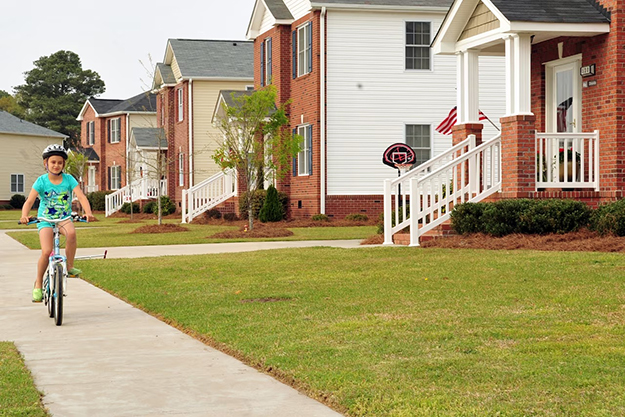Basic allowance for housing, or BAH, rates for 2024 will increase by an average of 5.4%. The new rates, which are paid to all U.S.-based active-duty members of the uniformed services when government quarters are unavailable, take effect Jan. 1.
"The proposed 5.2% basic pay increase plus the 5.4% increase in the basic allowance for housing build upon DOD's support of military members and their families. These increases ensure the military compensation package remains strong and competitive with the private sector and supports the economic security of our service members and their families," said Jeri Busch, DOD's director of military compensation policy.
BAH is a valuable component of the overall pay package and is designed to help offset the rental housing expenses service members may face when living off base in local communities. BAH rates are aligned with the housing costs of civilians with comparable incomes to each pay grade (with and without dependents) to ensure the military community can afford to rent adequate, suitable and available homes in safe neighborhoods, wherever and whenever they may be assigned," said Kevin Scott, a housing economist within DOD's Military Compensation Policy Directorate.
"The Department pays about $27.9 billion in BAH disbursements to over 1 million service members each year," he said.
Spotlight: Taking Care of Our People
"Considering the large footprint and wide-ranging impact of BAH on the well-being of military families, the department is committed to ensuring BAH data collection and housing estimation processes are driven by industry-leading data sources, innovative methodologies and proven quality assurance techniques," Scott said.
The 2024 BAH rates were determined directly from verified local housing listings collected in about 300 housing markets, including densely populated metropolises, suburban and rural duty stations, he said.
The BAH rate-setting process relies on a wide variety of data sources that include:
- U.S. Census Bureau survey data
- Bureau of Labor Statistics Consumer Price Index
- Industry-leading commercial subscription rental cost databases
- Trusted online rental listing websites?with verified listings
- Local market expertise from the services and local military installation housing offices
Housing data include median market rents for a variety of housing sizes. Electricity, heat and water/sewer are also averaged in the computation.
BAH rates are then calculated for each pay grade, both with and without family members, based on the cost of adequate housing for civilians with incomes comparable to each service member pay grade grouping.
The goal is to obtain high-quality, accurate, current-year housing cost data.
An integral part of the BAH program is the provision of individual rate protection to all members. No matter what happens to measured housing costs - including the out-of-pocket expense adjustment - an individual member who maintains uninterrupted BAH eligibility in each location will not experience a BAH rate decrease unless the member receives a reduction in paygrade or change in dependency status. This ensures that members who have made long-term commitments in the form of a lease or contract are not penalized if the area's housing costs decrease, according to the Allowance Division.
The actual impact of this year's BAH rate changes will vary depending on a member's housing choices. Members who rent a median-priced property may have to pay a small amount above their BAH rate (because of the out-of-pocket rate adjustment). Members who choose to economize in their housing choices may have all their housing expenses covered by BAH.
BAH rates not only reflect geographic market variances between duty stations, but because BAH rates are re-evaluated each year, BAH is also responsive to recent market changes, Scott said.
"As housing markets nationwide soared in 2022, BAH rates kept pace, increasing by a historic 12% between 2022-2023 rates. This year, housing markets cooled from their unprecedented growth and reset to strong, but more typical, growth. As such, BAH rates followed these trends in lockstep, increasing by an average of just over 5% between 2023-2024. Viewed from a wider lens, BAH rates have maintained a robust average annual growth rate of 7%+ over the past three years, compared to typical average annual changes of 3 to 4%," he said.
For more information on BAH, visit https://www.travel.dod.mil/Allowances/Basic-Allowance-for-Housing/. Service members can calculate their BAH payment by using the BAH calculator at: https://www.travel.dod.mil/Allowances/Basic-Allowance-for-Housing/BAH-Rate-Lookup/.
For more information about the BAH rate determination process, please see https://media.defense.gov/2022/Jun/23/2003023204/-1/-1/0/BAH-PRIMER.PDF.
Members with housing needs overseas receive a separate allowance called the overseas housing allowance. While both allowances compensate members for housing costs, the policies of the two programs are different, requiring different data collection and rate determination techniques. More information can be found here: https://www.travel.dod.mil/Allowances/Overseas-Housing-Allowance.





Read Comments